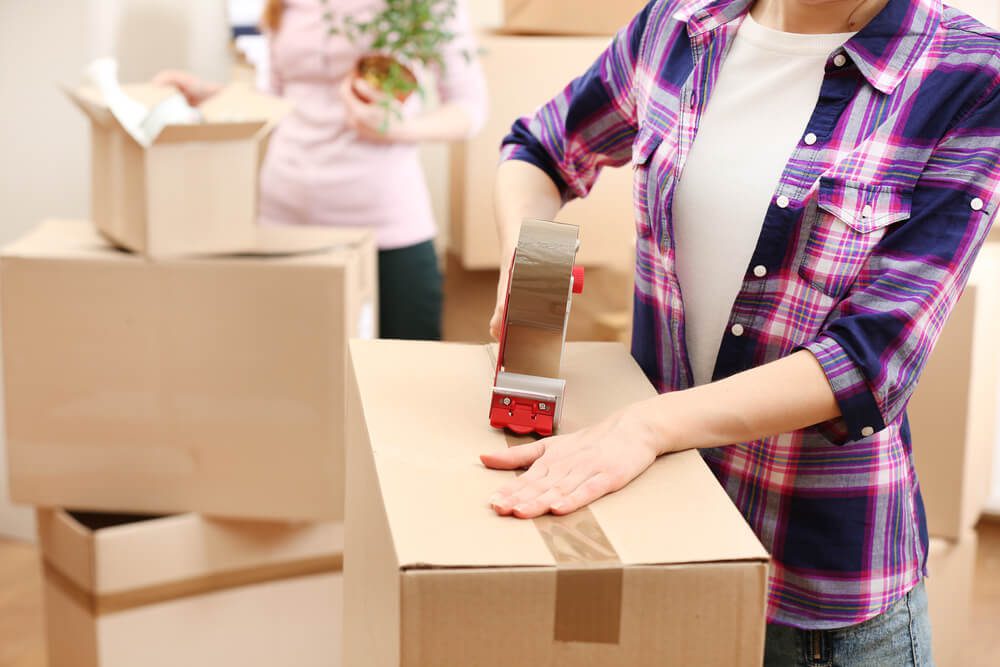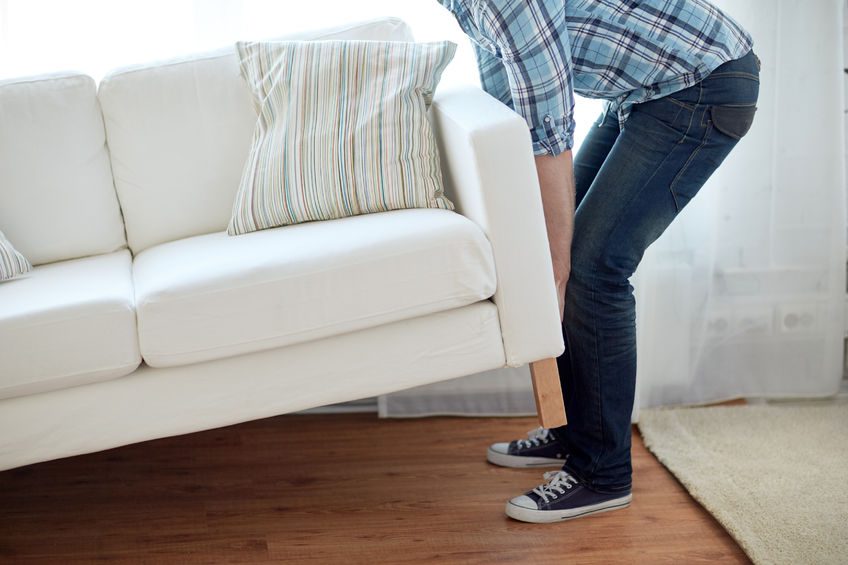Essential Tips on How to Pack Your Stuff
by TheLorry on 28 July 2025.
Moving isn’t just about transport—it’s a mental and physical project that requires strategic preparation. Many feel overwhelmed, back‑ache prone, or discover broken items upon arrival. By using moving packing tips and clever moving hacks, you can reduce stress, stay organized, and even protect your back. This guide offers clear steps—starting from decluttering to fragile item packing and box labelling—to help your move feel seamless.
Why Proper Packing Matters?
First, starting early and planning systematically not only cuts moving time but significantly lowers mishaps. Professional packers agree that early preparation lessens day-of stress. Secondly, decluttering beforehand helps reduce moving costs and declutter only what matters, making the whole process smoother and more economical.
How to Start Packing Like a Pro
1. Declutter & Plan Ahead
How to pack when moving house? Begin by identifying items you don’t really need—start packing from least-used to essentials. Decluttering reduces boxes, cost, and chaos while moving day approaches.
2. Group & Label by Room
Of course, when moving house, you need to keep similar items together. For instance, kitchenware in one box, office supplies in another—with clear labels. Avoid mixing fragile plates with heavy pots.
3. Use the Right Materials
Squash empty space using wadded news wrap, towels, blankets or bubble wrap. Place heavy items at the box bottom, then medium and light items layers upward, with filler between layers to make sure it doesn’t fall down or get damaged when moving house.
4. Seal & Don’t Overload
Ensure you don’t cram boxes—none should bulge or be too heavy. Keep the top lid flush and seal securely with tape to protect contents. After all, when moving houses, you need to pack properly, or something will definitely go wrong.
5. Secure Electronics & Small Parts
Moving electric items when moving houses is a pain that we all know. Which is why, you need to wrap cables, screws, and attachments together. Don’t forget to label and affix them to their devices (e.g., TV, printer) so nothing gets lost.
6. Special Care for Fragile Items
Wrap fragile goods individually, pad them well, and pack small boxes inside larger, cushioned boxes.

Moving can be a tiring experience especially packing all the stuff that you want to bring over to your new home. But packing your stuff properly can make the whole process of moving more manageable and ease the unpacking process once you settle with moving all your stuff. And to some of us, we want the packing process to be a breeze but clueless how to pack all those stuffs without causing a headache. Some items can also be very difficult to pack. Follow these tips on How to pack for a move to make your packing experience more manageable.
What to start with
Before moving, start identifying all the things you aren’t using and won’t need until after you move. Make a list and work backwards from least to most needed so that your everyday necessities will be packed until moving day.
Clueless where to put all those stuff that you keep in your drawers? For the lightweight items in the drawers, you can move as they are. What you need to do is just wrap the dresser with plastic wrapper to keep the drawers closed. You can ask your mover to help with the wrapping. But remember to take out anything fragile or spill-able that may damage other item before wrapping the dresser.
How to neatly pack into a box
Group and label like items together. For example, pack kitchenware together in one box and label it. Make sure you do not mix fragile kitchenware like plates and bowls with pots and pans. You do not want to throw in together items haphazardly as it may get damage during the moving process.
When wrapping item, wrap them individually with multiple layers. You can use materials like news wrap, paper towels, tissue paper and/or bubble wrap. Now your items are ready to be put into a box.
Before placing items to your empty box, create a two to three inch layer of padding at the bottom. To pad the boxes use crushed news wrap, towels, blankets or other soft items
Once padded, place the heaviest items on the bottom of the box, and then stack in layers with medium weight items in the middle and lightest weight items on top.
Place between each layer with crumpled news wrap or other packing materials to fill in the empty spaces. You can also use sheets of cardboard for dividers between layers.
Pack each box firmly but do not overload. You do not want items to shift and for the box lid can be close easily without bending inward or being over-packed as this can damage the items. Make sure each box tightly sealed with tape.
For electrical equipment and items with multiple part and pieces, group the parts and pairs them together. Put them in plastic bags and tape them securely to the item with which they belong. For example, wind and fasten the multiple cables for your television so they are not left dangling and then tape it behind the television. If you don’t have enough boxes, here are 3 places you can find boxes for free.
Special care for those fragile items
For those small and delicate items, you should wrap them individually. Remember to apply more padding for items that are more fragile when packing them for a move.
Pack those items separately in small boxes, either one item per box, or a few together in each box. Make sure you pad the box so that the items are fully cushioned.
These smaller boxes then can then be placed in a larger box, with each small box cushioned by additional news wrap to fill the gaps between boxes.
Organise with a list
Of course, when you want to pack when moving out, you need to have a list. After you finish with packing the box, list the content of each box with a permanent marker on the side.
To make it easier to track the boxes and its contents, create a list of the contents and number the box corresponding to the contents on the list and number each box.
Another idea that you can use to sort the content is by sorting the content according to room at your new house and tape signs on the room corresponding to the marking you make on the side of the box. This will make it easier to sort which box goes to which room and help the movers quickly distribute the boxes to their appropriate rooms.
You may also want to think about on which boxes you want to unpack first. Indicate these boxes with a special mark so they can be set aside when you arrive at your new home.
Advanced Tips for Moving Out Packing Hacks
✅ Use an Essentials Box
Keep a separate box for “first-day items” like toiletries, chargers, basic kitchen tools—it ensures convenience right after moving.
📦 Choose Box Sizes Wisely
Use small boxes (heavy items), medium boxes (bulkier items), and large boxes (light items like linens). This reduces risk and makes handling easier
🗂 Create an Inventory & Tracking System
Number each box, label contents, and create a tracking list aligned with the boxes. Use color coding for rooms (e.g., red for kitchen, blue for bedroom).
🧠 Prioritize Unpacking Order
Mark essential boxes (e.g., first‑night box) for quick access. This saves time and reduces stress.
Benefits of Proper & Organized Packing
-
Saves Time & Money: Reduces materials and labor costs by packing only what matters
-
Improves Efficiency & Space Use: Maximizes truck space—and reduces trips—when packed smartly
-
Reduces Damage Risk: Structured packing prevents shifting, breakage, and loss
-
Less Stress: Systematic planning reduces anxiety and simplifies the move
How to Move a Fridge?
Expert Fridge Moving Tips
Suppose you’re moving a fridge. First, defrost and dry it a day before. Wrap the fridge with bubble wrap, secure the doors, and use a small dolly for safe transport. These fridge moving tips can prevent leaks and physical strain. When it comes to moving a refrigerator, precision and planning are key. A large appliance like this can pose risks to both your home and your body if handled improperly. It is similar with moving or packing other electronic items or electronic appliances too.
Prepare & Defrost (At Least 24 Hours Before)
-
Turn off and defrost: Switch off the fridge at least one day in advance to avoid ice build-up and water leaks.
-
Dry fully: Wipe every surface dry—including compartments, seals, and the freezer—so there’s no moisture left during transport.
-
Secure internal parts: Remove shelves and trays, or tape them securely inside to prevent movement.
Wrap & Protect
-
Bubble wrap or heavy-duty moving blankets: Cover all sides of the fridge to prevent scratches and dents.
-
Use painter’s tape or stretch wrap: Keep doors closed securely, especially if the fridge will be moved on uneven terrain.
Move with Care
-
Use a wheeled dolly: A furniture or appliance dolly makes transport smoother and reduces physical strain.
-
Angle and tilt correctly: Tilt the fridge back slightly and rest the base on the dolly—never drag it flat.
-
Mind your grip and posture: Keep your back straight, and lift with your legs. Avoid twisting your torso.
-
Protect flooring: Place protective cardboard or matting when moving across indoor surfaces.
Transitioning Up or Down Stairs
-
Take it step by step: With at least one helper, tilt the fridge and move slowly with controlled steps.
-
Use lifting straps if available: These reduce pressure on your back and make lift control easier.
-
Clear surroundings first: Remove rugs or obstacles, and keep a clear path to the exit or truck.
After Moving
-
Wait before plugging in: Allow up to 2 hours after standing upright before turning on the fridge, to let coolant settle.
-
Monitor the first 24 hours: Check for leaks, noise, or temperature inconsistency—report issues immediately.
Why Follow These Fridge Moving Tips?
-
Prevents water damage, mold, and spills.
-
Protects against breakage or injury.
-
Saves time and reduces stress for a smoother transition.
💡 Prefer a hassle‑free move?
Our House Moving Package covers everything from appliance prep to safe transport:
-
Fridge defrost and dry‑down
-
Individual appliance wrapping
-
Secure door strapping
-
Appliance dolly transport by professional movers
-
Moving up/down stairs included
Let our experienced team handle the heavy lifting so you can focus on settling in. Inquiry via the TheLorry platform or our app!
Frequently Asked Questions (FAQ)
How long should I defrost my fridge before moving?
Can I move a fridge without a moving dolly?
How many people are needed to move a fridge?
When can I plug in the fridge after moving?
With these tips, you are now armed with the basic knowledge to make your packing much easier and manageable. Remember, proper and organise packing will make moving much easier and less taxing.
By following these moving tips and packing hacks, your next relocation can be smoother and far less stressful. Plan in advance, declutter well, and pack properly. When you’re ready to move, check out “how you hire a lorry in Malaysia” for streamlined transportation—click here.





 MY – EN
MY – EN Singapore
Singapore Indonesia
Indonesia